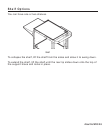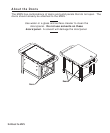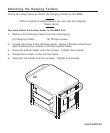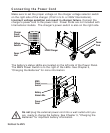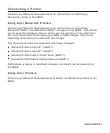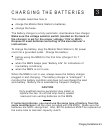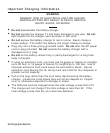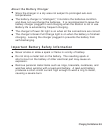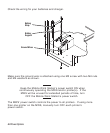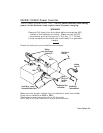
Important Charging Information
WARNING
DANGER! RISK OF ELECTRICAL AND FIRE HAZARD.
CERTAIN ACTIONS MAY RESULT IN DEATH, SERIOUS
INJURY, SHOCK, OR BURNS.
◆
Do not disassemble the battery charger.
◆
Do not operate the charger if it has been damaged in any way. Do not
spill liquids into the charger, such as water or soft drink.
◆
Do not expose the battery charger to rain or snow. Never charge a
frozen battery. The colder the battery, the longer it takes to charge.
◆
Plug only into a three-prong grounded outlet. Do not alter the AC power
cord or plug provided. Do not operate the battery charger with a
damaged cord or plug.
◆
Do not let the battery remain fully or partly discharged for a long time;
keep it charged.
◆
If using an extension cord, you must use 18 gauge or heavier for lengths
up to 50 feet, or 16 gauge or heavier for lengths up to 100 feet. Use of
improper extension cord could cause fire and electric shock. Use an
extension cord bearing the UL listing mark and rated for four Amperes or
greater current capacity.
◆
Pull on the plug rather than the cord when disconnecting the battery
charger. Locate the cords where they will not be stepped on, tripped
over, or otherwise subjected to damage or stress.
◆
The batteries must be charged when the total voltage is less than 21V.
The charger will not charge if the total voltage is less than 5V. If the
total voltage is less than 5V, you need new batteries.
3-2 Charging the Batteries




